Union Market founder Tony Bromovsky claims he has created a middle way between farmers’ markets and supermarkets in a former London Underground station.
N ew food formats or stores, come to that, don’t come along very often and the usual form in this distinct part of retail is tinkering. Tinkering, that is, around tried and tested ways of doing things, refining a layout here, altering a graphics package there.
What is not generally seen is something completely new that attempts to play with accepted norms and offer shoppers an alternative to their usual expectations. Yet that is what Tony Bromovsky, founder and director of the freshly opened Union Market on Fulham Broadway, claims to have done. “Somewhere between the theatre of the farmers’ market and the efficiency of the big supermarkets, there is a middle way and that is what we are trying to do here,” he says.
The 5,500 sq ft Union Market is in fact located in the ticket hall of the former Fulham Broadway station - on the District Line, dating from 1905 - giving it a huge architectural advantage. The street-level station actually closed in these premises in 2003 and in the interlude there has been a branch of US-themed bar and restaurant TGI Friday’s.
However, that tenure came to an end in April when Bromovsky signed a deal that gave him the building to set up the first Union Market: “It has been a three-month fit-out, but we have had a team in place for about a year. We had a template theoretical store design and it was very detailed. It was a matter of finding the right site.”
The “theoretical design” referred to was the outcome of collaboration with Bermondsey-based consultancy Cada Design and features 10 distinct departments, which Bromovsky says are essential for the “model” to be a success. In no particular order, these are: wine, delicatessen, take-away, cheese, meat, grocery, tea and coffee, fruit and vegetables, a bakery and a restaurant.
And, stand at the entrance through which Fulham’s time-pressed, but generally affluent denizens used to pour on their journeys up to the West End and it is immediately apparent that the model for this store is based on a covered market, rather than a single shop. Yet it is a single shop and the unifying feature is the station architecture, all of which has been restored. In the far distance the wine department is actually reached by passing through a pair of stone pillars and it is filled with light.
Bromovsky says that in its former life as a TGI Friday’s restaurant, what is now the wine department wasn’t visible, owing to its being used as a kitchen, with the glass atrium above it closed in and the rest of the space behind closed doors. “The only way I knew about it was when I went up on the roof and noticed this marvellous glass structure,” he says. “You actually needed a tremendous amount of imagination to see the potential of this building, perhaps more than I have.”
Nonetheless, now that the false ceiling at the rear and all the other elements that contrived to conceal the shape of this interior have been removed, what is revealed is an interior that most developers and retailers can only dream about.
All aboard
At the front of the store, on the right, is a discrete fruit and veg shop, while in the middle of the area there is a bakery with breads and patisseries arranged in the style more usually associated with a French boulangerie than a Brit cake shop. Beyond this, there’s a meat counter, a ready-meals counter and, before you reach the wine, the cheese room.
The latter is chilled and stocks about 30 cheeses, all of which are sold from large blocks, and there is a dedicated cheesemeister, well, mistress actually, who seemed on the day of visiting to know everything there was to know about the product.
In contrast to the light wood and mellow limestone tones of the rest of the shop, the wine department at the back is painted white, presumably with the intention of maximising light from the four-sided glass pyramid above it. And, in case you miss the outsize ‘Wines & Spirits’ sign, two giant claret bottles fill the void between the top of the wine shelves and the raised eye-level view from the front towards the back of the shop.
It’s all very organic and Cotswolds in feel and it is clear that great efforts have been made to capture the sense of an indoor market, right down to the cast iron screen that separates the wine department from the rest of the store. It would also be easy to feel that you have strayed into an interior that has been in its current upscale form for years, instead of just a week or two.
In part, this is certainly down to the elaborate dark wood frontage on the left hand side of the shop where
travellers used to buy their tickets, which provides a nostalgic setting for the diners who are having a quick bite. It is generally the architecture that does most of the work here, that and the deft visual merchandising of the food, which makes you want to buy things you weren’t even aware you needed.
Mention should also be made of the graphics package, created by consultancy Here, that succeeds in combining a distinctly retro feel with a series of very clear messages. Bromovsky is clearly proud of these and points at a poster bearing the legend: ‘Union Market What’s Your Bag?’ This uses just three colours, red, black and taupe, all set against a white background, to create something that looks as if it could have been printed by for a government information poster 60 or more years ago. And, if you want to buy one, the posters are on sale.
Union Market is very English and as Bromovsky, who in spite of having a Czech father was educated in this country, says: “It’s very difficult to do English if you’re not English.”
This is uttered in the same breath as the name Whole Foods is mentioned and he is quick to point out that Union Market is considerably cheaper than the nearby foodie behemoth in Kensington. It is worth noting, perhaps, that the buying manager for the store, Aylie Cooke, was in fact recruited from Whole Foods.
All in all, it is a beautiful store and “beauty always works”, according to Bromovsky. He concedes that there can be the occasional problem of perception and that, if something looks too good, then shoppers will almost automatically assume that it’s expensive. However, prices at Union Market are not overly high (one customer remarked “Bye-bye, Waitrose”) and Bromovsky says he can see a further
10 branches opening in the next three years.
This will, of course, be dependent on the continued backing of Odey Asset Management, the major investor of the £1m that has been deployed to open this new venture. “We are in a recession and you do need to be quite ruthless on costs,” says Bromovsky. Judging, however, by the number of well-heeled potential shoppers who were piling into the shop on the mid-week day, this looks to be a well-measured enterprise and one that is proving resonant with the residents of Fulham.
Union Market, Fulham
- Size 5,500 sq ft
- Cost £1m
- Interior Cada Design
- Graphics Here
- Departments 10
- Former life A branch of TGI Friday’s and before that the ticket hall of Fulham Broadway Underground station




















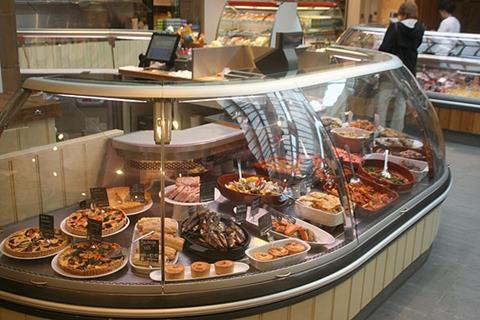





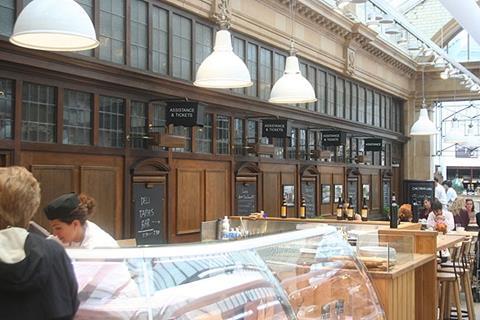
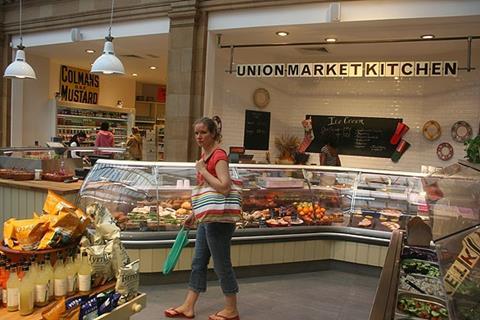

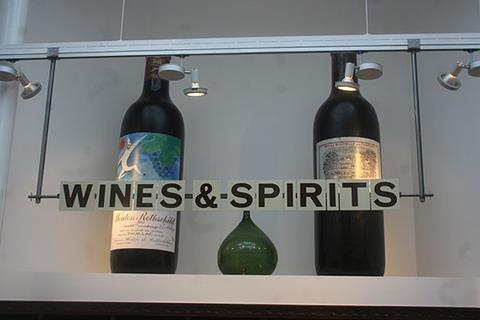


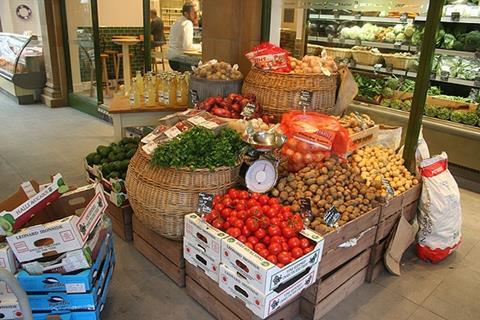

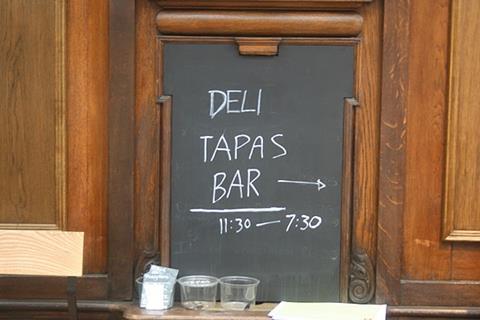
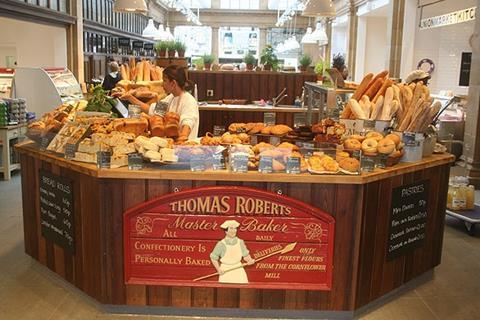
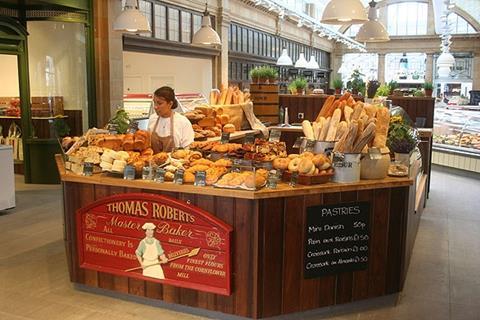


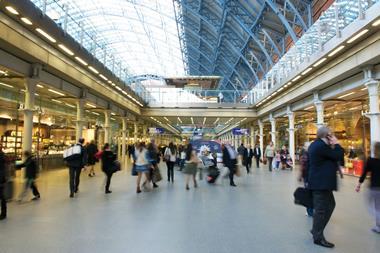


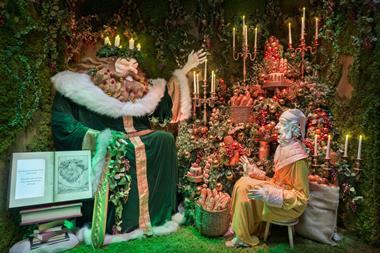


1 Reader's comment